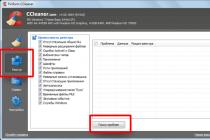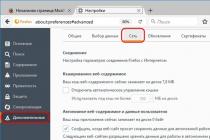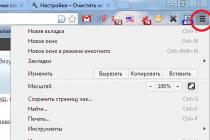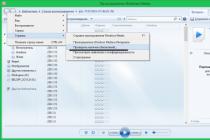Channel connection
To connect Yandex.Direct in your Roistat project, use.
You can connect several Yandex.Direct accounts, and each of them will have a separate channel.
After connecting the channel in the Rates Managementall advertising campaigns of the connected Yandex.Direct account will be displayed.
Initial setup of bid management
To enter the sectionRate management select the appropriate item in the navigation panel on the left and in the menu that opens, click on the name of the desired advertising channel:
All you need to do for the initial setup is to specify the optimal amount per click that you are willing to spend ( Write-off price) and choose a strategy.
Selecting a bet
You must specify the optimal amount per click, which you are willing to spend on keywords in this campaign. To do this, open the tab Campaigns:

The value is indicated in the table in the field Write-off price and is saved automatically after input.
After entering a value in the field Write-off price the corresponding CPC will also change in your Yandex.Direct account.
To view the Roistat hint with a table on the recommended values of the charged price and the corresponding traffic volume, place the cursor in the amount input field:

The table displays the following data:
Choosing a strategy
You need to choose a strategy for placing your ads. To do this, open the tabCampaigns.
In the table for the required campaign in the columnStrategy in Yandex.Direct press the star button. In the menu that opens, select the appropriate type of strategy and save your selection using the buttonChoose a strategy :

After pressing the buttonChoose a strategy the campaign strategy will also change in your Yandex.Direct account.
Rate management uses Yandex strategies, and at the same time, the system tries to place your ad in the most advantageous position.
How it works:

With the transition from placement positions to traffic volume, Yandex left the approximate ratios of traffic volume and display positions so that advertisers could orient themselves when setting bids:
| Traffic volume | Placement position |
|---|---|
| 100 | 1st special placement |
| 85 | 2nd special placement |
| 75 | 3rd special placement |
| 65 | 4th special placement |
| 10 | 1st place guaranteed impressions |
| 5 | Access to guaranteed impressions |
Highest available position (5 *)
This strategy uses all available traffic reaches, which corresponds to attempts to place at the highest available position in blocks"special placement" and "guaranteed impressions".
Display in the blocks "special placement" and "guarantee"(4*)
This strategy depending on the set write-off price tries to fight for bids corresponding to the traffic volume not exceeding 65. Which corresponds to the last position of the "special placement" block or the highest available position in the "guaranteed impressions" block.
Display in blocks "special placement" and "guarantee" at a minimum price (3 *)
This strategy, depending on the set write-off price, tries to compete for bids corresponding to the traffic volume of 65 or 5. Which correspondsthe last position in the "special placement" block or the last position in the "guaranteed impressions" block.
Display in the "guarantee" block (2 *)
This strategy, depending on the set write-off price, tries to compete for bids corresponding to a traffic volume of less than 10. Which correspondshighest available position in the block"guaranteed impressions".
Display in the "guarantee" block at the lowest price (1*)
This strategy, depending on the set write-off price, tries to compete for bids corresponding to the traffic volume 5. Which correspondslast position in block"guaranteed impressions".
Betting mechanism
Let's consider setting a bet using the example of a 5-star strategy.
Roistat downloads information from Yandex.Direct about all possible traffic volumes, charged prices and bids for each phrase.
If strategies are selected that restrict placement (below 5 stars), then filtering takes place by suitable positions. In the case of 5 stars, all possible traffic volumes are taken.
For the 5-star strategy, the write-off price from the settings is taken into account and a segment from 70 to 100% of the set write-off price is taken. From the obtained values, the best ratio of the traffic volume to the charged price is calculated,that is, the lowest cost per traffic unit.For example, if the written-off price is equal to 100 rubles, the search for the optimal rate in the range from 70 to 100 rubles will take place.If 80 traffic volume costs 80 rubles, and 90 traffic volume costs 100 rubles, the position of 80 coverage will be selected, since it is more profitable.
For the received position, we get the bid in Yandex.Direct. Before that, calculations were made taking into account the price being written off, and not the rate. These values may differ.
It is checked whether the found rate satisfies the limitations in the experimental capabilities (described above).
If it does, then the rate found in step 4 is set. If not, then the rate is set = write-off price * coefficient from the experimental possibility.
Bid priority
The bid is taken according to the following priorities: Write-off price of a word -> Write-off price of a campaign.
Restrictions in setting the rate from the charged price
Due to the peculiarities of the auction in Yandex.Direct, in some cases the price charged may turn out to be higher than the set value. However, on average, the price charged will be equal to the price you specified.
In order not to write off amounts that greatly exceed the cost to be written off in Bid Management, there is a restriction that the bid in the Direct auction cannot exceed a certain value of the cost to be written off. The figure below shows how you can navigate: what is the rate (1), and what is the charged price (2) in the Yandex.Direct interface.

By default, there is the following limitation: the rate cannot exceed the charged price by more than 200%. You can change this value experimentally:

Enabling Bid Management
Then you need to enableRate managementby moving the switch next to the name of the required campaign to the right (in the columnStatus):

From the moment of inclusionRate managementit can take on average one to two hours before the first changes on Yandex search pages. This is due to the fact that the Yandex.Direct system changes ads with a delay.
You can use the Bid Management tool from Roistat and the Bid Adjustment tool from Yandex at the same time. In the case of simultaneous use of the tools, the Bid Adjustment from Yandex is applied to the bid established by the Office Roistat rates.
Example initial setup
For example, for a campaignBranded - Search - Moscow you are ready to spend 7 rubles.
According to Roistat's calculations, this amount is enough to get 10 traffic volumes, which corresponds to the 1st place of guaranteed impressions:

If this suits you, then enter the amount from 4 to 7 rubles.
This meaning Written off price
consistent with the strategy2 stars... Click on the button for choosing a strategy and check the description of this strategy in the drop-down menu:
We save the strategy and turn on Rate management.
Switching from Rmax to the write-off price
Now in the settings you set not the maximum bid, but the price to be written off. Often, at high rates, the write-off price can be significantly lower than the rate. Previously, you set the maximum bid per click, now in the Roistat interface you control the target cost of a click. This allows your ads to rank higher.
If the price to be written off is not filled in, then the previous value of Rmax will be taken for it.
Additional features
Campaign management
When you enter a section, a tab opensCampaigns.
On this tab, you can:
Bid management for specific keywords
You can set the value Written off price both for all keywords of the campaign (see p.), and for each of them separately.
To ask Written off price for keywords individually, click on the campaign title. On the page that opens, in the table of keywords, specify the desired values in the column Written off price ... The value is saved immediately:

To cancel the entry of the new value, press the buttonin the same column.
Viewing campaign statistics
Customer management collects statistics on advertising campaigns from Yandex.Direct and Analysts Roistat and tabCampaignspresents it as an interactive table.
The table displays the following information:
- 10 business metrics valuesAnalysts Roistat: Visits, Expenses, CPC, Conversion to applications , Applications, CPL, Sales, CPO, Profit and ROI:
s assignmentAverage rate by keyword campaign from Yandex.Direct;

In addition, you can view more detailed campaign statistics for each day of the selected period. To do this, click on the arrowto the left of the campaign name:

Also, when you click on the iconThe corresponding summary statistics for keywords and ads will open next to the campaign name:

The table that opens lists all the statuses of the keywords and ads in the campaign. Each of them displaysthe current number of and percentage of total clicks.
In this table, you can see, for example, the number of active words or stopped ads for a particular campaign. This is necessary if the number of ads is large and it is rather difficult to figure out which of them are stopped and which are not.
Statistics view control
You can customize the followingview optionscampaign statistics:
Select the time period for which you want to view the values of the indicators:
To do this, click the required button above the chart:period selection button (when clicked, the calendar opens),Today , Yesterday , A week , Month , 3 months ;
Filter campaigns by status in Yandex.Direct Active /Stopped :
To do this, click the corresponding button in the right upper corner tabs;
Filter campaigns by type Search / Context:
To do this, press the buttonEverything , Search or Context above the table;
Filter campaigns by name:
To do this, enter text in the search box:

Controlling ads with low CTR
Index CTR(from the English. click-through rate- click rate)allows you to evaluate the effectiveness of key phrases. Thanks toCTR controlyou can automatically disable those key phrases that are ineffective for your business.
To use this function, go to the tabCTR control:

Step 1.First, you need to configure the following parameters:
- Lower CTR threshold- Key phrases with a CTR below the specified one will be tracked. The value is indicated in the field after the words: Track CTR Less;
- Lower threshold of impressions- the number of key phrases impressions required to be triggered CTR control... The value is indicated in the field after the word after;
- - set this flag if you want ineffective phrases to be disabled automatically:

The settings are saved with the buttonSave settings
.
Step 2.After setting, you can turn onCTR controlby moving the switch of the same name to the right. In the lower right corner, you should see a system message about turning onCTR control:

Step 3.Follow the workCTR control.
The report on its work is displayed in the blockDevelopments in the form of a table:
The table contains the following information:
- Disabled- the phrase has been disabled because flag was setDisable phrases with low CTR automatically ;
- Empty field- the phrase got into the table, because meaningCTRand the number of impressions met the configured conditionsCTR control... But the phrase was not disabled, because flagDisable phrases with low CTR automatically Has NOT been installed.
date- the date the key phrase was triggered;
Phrase- a keyword with a low CTR;
In the campaign- the name of the respective advertising campaign;
CTR- the value of the CTR at the time of triggering CTR control;
Impressions- the number of impressions at the time of triggering CTR control;
Clicks- the total number of clicks on the phrase at the time of triggering CTR control;
Event- current phrase status:
With these statistics, you can find out which of your ads are performing poorly.
Automatic bid optimization
The Optimizer quickly raises the maximum CPC, which allows you to trade in a wider range for a given strategy. Hemonitors campaigns that showROI and Conversion to applications not lower than the established thresholds, and increases their rates. The frequency of this process depends on the trading activity for a particular keyword.
Bid management updates information on Yandex.Direct campaigns every 5-15 minutes. The frequency depends on the number of keywords in the campaign.
To configure, open the tabOptimizer setting and set the following conditions for changing rates:
- Indicator value in percent:ROI and / or Conversion to applications If the ROI of the campaign is higher ;
- The period for which the indicator will be monitored. The value is indicated in the field after the words:for the last;
- The percentage you want to raise Write-off price ... The value is indicated in the field after the words:increase the written-off price by .
To disable one of the conditions, set the value Written off price equal to 0 .

The conditions for automatic bid optimization are saved using the buttonSave.
Automatic bid optimization is enabled / disabled on the tabCampaigns... To enable or disableOptimizerfor any campaign, move the switch in the column of the same name to the right or left, respectively:

If as a result of automatic optimizationROI or Conversion to applications drop so much that it turns outbelow the set threshold, then Write-off price will return to the previous value, because the campaign will no longer be eligible for optimization.
If a campaign meets both conditions, then only the larger of them will work. If only one condition is met and the other is not, the rule will be triggered.
For example, you are configuringOptimizerin the following way:
if ROI campaigns> 10% in the last 10 days, increase Write-off price by 50%;
if Conversions to applications campaigns> 8% in the last 7 days, increase Write-off price by 30%.
In this case, if at some pointROIcampaign will turn out to be 11%, andConversion to applications - 9%, then the CPC will be Write-off price + 50%. If in the future ROI or Conversion to applications will remain within the values specified in the Optimizer settings, it will remain equal Write-off price+50% ... If these indicators are lower than the specified ones, the value Written off price will return to the original.
note thatOptimizerdoes not provideconditions when the bid can be automatically placed below the initial value. This is a deliberate step, this is our strategy.
First, it makes the mechanism reliable and secure.
Let's consider a situation when, for some reason, your CRM integration breaks down or there are some other data problems. In our case, the optimizer will simply not increase the bid once again, and that's it. That is, there can be no damage in principle. In case you set up a downgrade, there would be direct damage.
Second, this mechanism still leaves you with the option to specify a lower default rate (i.e. baseline) and a higher growth percentage for profitable campaigns. However, a low rate is rarely beneficial. If your ads are in dynamics with a low rate, then they will not be able to become profitable. In this case, the click, of course, will be cheap, but there will be no clicks. And, accordingly, there will be no orders with a profit. As a result, the strategy of automatically lowering the rate will be deliberately unprofitable.
We have released new book"Content Marketing in social networks: How to get into the head of subscribers and fall in love with your brand. "
Many advertisers are sure that advertising specialists after launching advertising campaigns do not do anything there - they just sit, count the number of clicks and spend their money, spitting on everything else and never returning to these campaigns. Oh, if only.Optimization of Yandex.Direct advertising campaignsshould be done regularly, only then the advertising will be effective and generate income.
Today I want to tell you what happens to an advertising campaign after you have pressed the magic "Start" button.

Backing track
It would seem that the campaign has been launched, there are impressions, clicks too, but the conversion is a little lame, or in general there are a lot of impressions and few clicks. The first thing that comes to mind is to check the requests for which ads are displayed. To do this, go to the "Direct - Summary" report in Metrica:

and select the appropriate groupings that interest us:

In this case, this is a slice by campaign, ad, keyword from Yandex.Direct and search phrase for which the ad was shown:

For example, in our campaign there is a query "makeup school". Having built the required report, we see that our ad was shown not only for the query "makeup school", but also "why is it impossible to make up for school." In this case, the words "why", "not" are necessary add as to the phrase or the whole campaign in general.
Why is this needed? Wordstat statistics are constantly updated, users are constantly generating new requests that are not in the system and which you could not even think of. Therefore, you do not need to think that, having eliminated everything once and for all, you will no longer have to return to this.

Evaluating your ad positions
If it seems to you that you are not getting enough traffic, you need to look at exactly where your ads are shown - in a special placement or in a guarantee. To do this, you can go to the standard reports in Yandex.Direct and check the boxes that you need, not forgetting to click in front of the "Position" slice. As a filter - "Site type" - "Search".

Why is this needed? You can estimate how often you lose by. Perhaps only a slight increase is needed to minimize guaranteed impressions. After all, whatever one may say, special placement attracts more users' attention and, as a result, gets more clicks. But it all depends on your budget and capabilities.
Evaluating the effectiveness of phrases
It's no secret that often some phrases bring long-awaited orders, and some just drain the budget. If there are no non-targeted impressions for them, in general, everything is fine, but there is no effect, then you can:
- try to rewrite the ad and evaluate the effect;
- lower the rate for these requests;
- reluctantly, refuse these requests.
If the phrase is effective enough and brings a conversion, you need to find out if you can get more clicks on it. To do this, see if it often falls into the warranty and if you can somehow fix it. Perhaps all that is missing is a small increase in the rate, which will then pay off with interest.
Exclusion of sites in YAN
Why is this needed? Often, ads are displayed on sites that are completely unrelated to your ad. As a result, idle impressions lower the notorious CTR, and ineffective clicks waste your budget.
To understand which sites you don't need, use the following reports:
- Report in Yandex.Direct. Here you can estimate costs by type of site and its effectiveness in terms of impressions, clicks and costs.

How is it useful? You can upload the report, sort the sites according to the criteria you need, select those that should be excluded, and add to "" in the campaign settings.

- Report in Yandex.Metrica. In the menu "Reports" - "Standard" there is a report "Direct - sites", which can also be segmented as you need. This is how this report looks standard:

How is it useful? In Metrica, you can segment the report according to the goals you need, and, therefore, evaluate the effectiveness of the site not from the cost side, but from the side of its effectiveness.
Additional adjustments
Among other things, you can quickly conduct a quick analysis in Yandex.Metrica and configurebid adjustments in Yandex.Direct.
- Adjustment for gender and age. You can use the Age and Gender reports to customize this adjustment:

Here you can estimate who comes to your site by age and gender, estimate who makes the most conversions, and adjust the adjustment of bids by gender and age. For example, I see that my the target audience- these are women from 18 to 34 years old. Then I go to the settings of my ad campaign and raise the bid based on this data:

- Adjustment on mobile. To configure it, you need to go to the "Devices" report:

And add a new condition:

As seen, optimization of Yandex.Direct campaignsrequires an assessment of what you are doing and a clear understanding of why you are doing it. Therefore, if in doubt, you should contact a specialist, and everything will definitely be fine.

Therefore, it is important to be able to optimize your betting strategy in such a way as to stay the most profitable and not to drain your entire bank in a short period of time. Let's try to figure out how to do this.
System selection. Most experienced players have their own system and play exclusively by it. A great variety of different schemes and strategies for sports betting have already been created, but it is worth noting that none of them is universal and will not become one hundred percent guarantee of your victory. All sorts of "forks", "dogons" and other tricks of the players - this is just one of the components of forecast management.
Analysis of information. Every self-respecting bettor is simply obliged to use as many sources of information as possible to make his prediction. Only a competent selection and analysis of data will give you an advantage over the bookmaker, and, accordingly, the ability to minimize risks for a particular bet, writes the internet portal stavki-na-sports.com.
Financial management. If you decide to treat sports betting not as entertainment, but as serious work, then you should definitely take care of the proper management of your funds. You should not play for your entire bank, it is better to allocate a certain amount for the game and divide it into several equal parts. So, you will be sure that temporary gaps will not unsettle you and in the long term there will always be an opportunity to recoup.
Experience is the foundation. All successful bettors point out that sports betting is never a snap. It will take a lot of time and effort to understand all the nuances of sports predictions, and only after that you can become financially successful.
Emotions are your main enemy. The betting process must always be approached judiciously. Otherwise, you run the risk of making a couple of rash predictions to enter the courage and easily drop your entire bank.
Thus, sports betting management is the most important component of your success in this business. If you do not disdain it and listen to all our advice, do not hesitate - victories will not keep you waiting.
Google AdWords... Gedds Brad's Comprehensive Guide
Automatic bid optimization: cost per conversion as the main criterion for success
For the search network, Google has an AdWords economies feature that allows you to pay just a cent more to rank one place higher than a competitor's ad (see “How Quality Metrics Determine Actual CPC” in Chapter 7). On the Display Network, Google enforces a different policy called automatic rate optimization.
Google tries to estimate how likely it is that the content on the display page will prompt a user to take a conversion action. If the odds are slim, Google may lower your CPC. If, according to Google, the page that the user came to is more likely to convert, the CPC goes up (up to the maximum you specify).
Note. In some cases, Google will offer a discount on Display Network CPCs, but you must bid differently for Display Network and Search Ads based on the ROI of the ad spend or the funds needed to meet your marketing goals. For some ad groups, you will set bids higher than on the search network, and for others, lower. Don't set the same bids for the Display Network and the Search Network. If you are at a loss to choose an initial bid for the display network, follow the following rule: its size should be 75% of the bid for the search network. For example, if you are willing to pay $ 1 per click on the search network, bid $ 0.75 for Display.
Auto Bid Optimization creates an environment where the conversion rate decreases and the cost per conversion comes to the fore.
Let's say you sell digital cameras and your maximum CPC bid is $ 1. The first site that showed your ad specializes in digital camera reviews and is considered reputable. Your ad appears next to an article covering the exact digital cameras you sell. These types of sites are in the second half of the buy cycle and are more likely to generate conversions than other Display Network sites. This means that you will pay more per click than if you go from a less authoritative site. Let's say your ad was posted on Johnny's blog, exactly where he talks about how he used it. digital camera during a trip to the island of Aruba. The site does not have a pronounced commercial focus; therefore, it is less likely that it will provide you with a conversion. But that doesn't mean you don't want to advertise on Johnny's blog. Data in table. 9.1 show how your ad is performing on the two sites mentioned.
Tab. 9.1. Comparison of two sites
In this scenario, Johnny's blog is driving you half the conversions of a review site (5% versus 10%). On the other hand, you pay a lot less per click (0.25 vs. $ 1), which means the conversion rate on Johnny's blog is more profitable (5 vs. $ 10). You make more profit from a visitor to Johnny's blog than from a visitor to a review site.
Each site has its own circle of users, and the traffic from them is also different. So don't be surprised if you find significant discrepancies in CPC and conversion rates.
Keep in mind, however, that when you measure the success of your display ads, your primary focus should be on cost per conversion, with conversion rates and CPCs being secondary.
Once your ads start showing on the Display Network, research the sites Google has placed them on to determine which ones are giving you decent and which are not getting enough value. After some time, when enough data has accumulated to make informed decisions, request reports from AdWords to set up your display campaigns based on the criteria for success.
From the book Rich Mom vs. Rich Dad the author Doronina OksanaChapter 13 The Cost of Success Respect for Yourself Without learning to respect yourself, and therefore your desires, it is difficult to respect other people. Can a person who, under pressure from others, give up even their small desires, can count on achieving great success? Today
From the book 1C: Accounting 8.2. Self-explanatory tutorial for beginners the author Gladkiy Alexey AnatolievichAutomatic registration of documents for accounting of cash In the program "1C Accounting 8" is implemented the ability to automatically generate a journal of registration of cash documents. This report contains information about all primary cash documents
From The Intel [How Robert Noyce, Gordon Moore, and Andy Grove Created The World's Most Influential Company] by Malone MichaelAutomatic registration of bank documents All documents that have been created and saved in the configuration can be seen in the corresponding list interfaces. For example, payment orders are displayed in the window of the list of payment orders, payment requests - in the window
From the book A Guide to Success in Life and Money author Shah-Ch Ark. From the book Envy and Other Perpetual Drivers of Advertising the author Ivanov Alexey NikolaevichChapter 11. The Price of Success "Heaven does not help those who do not want to act" (Sophocles). "Work, work, work!" was the motto of Joshua Reynolds. “Always at work,” said Voltaire. Walter Scott made it his rule: "Never mess around!" Favorite saying
From the book Key Account Management. Effective collaboration, strategic partnerships and sales growth author Shiffman Stefan From the book Profitable Hairdresser. Tips for owners and managers the author Dmitry Beleshko26. Fourth criterion As we noted, there are four criteria for categorization of the 50% category. We discussed the first three. The last criterion is the correct timeline required to achieve the goal. What do I mean by “timeline”? How long will it take
From the Google AdWords book. Comprehensive guide author Gedds Brad6. We increase the conversion. We turn interested customers into real ones In this chapter we will work with the parameter "conversion", which shows how many potential customers turn into real ones - how many of those who called or passed by,
From the Kanban book and JIT on Toyota. Management starts at the workplace the author The team of authors From the book Goals and Solutions the author Kiyosaki Robert TohruBasic: Converted Users The easiest way to remarketing is to create two lists: Converted. non-converting users: The cookie duration for non-converting users on most sites is
From the book The Capitalist Manifesto author Birman IgorIntermediate: gone and not converted In this case, you start with the same structure as in the base version. However, one more needs to be added cookie file: Abandoned Cart Shoppers. It will only appear in the shopping cart or on pages in the middle of a multi-page
From the author's book From the author's bookThe Cost Per Conversion Optimizer The Cost Per Conversion Optimizer is not a standalone bidding option, but additional parameter when using any pay-per-click method. With him using google will adjust bids based on the likelihood of a conversion.
From the author's bookThe main criterion - "savings" The goal of efforts to reduce labor costs - to reduce costs (cost). Therefore, choosing from several options, you should constantly ask yourself: "Which one is more efficient in terms of minimizing costs?" In this case, in practice, you
From the author's book“Why” as a criterion of potential If we talk about goals, then the question “why” has a strong influence on the “how”, and in two directions. Let's look at this using money as an example. 1. By limiting your why, you are limiting how. For example, if a person has decided in advance,
From the author's book§ III. Criterion October 1917, the granddaughter of the Decembrist: - What's on the street? - Revolution, young lady. - That's great, my grandfather was also a revolutionary. What do they want? - To avoid the rich. - Weird. My grandfather wanted not to be poor. Hume's Fork: “Or our actions
Gennady Petrovich sells samovars, the cost of a samovar is 1000 rubles, and he sells them for 2000, therefore, from each samovar he has 1000 rubles of profit.
Gennady Petrovich understands that he can spend part of the profit from 1000 rubles on attracting a client. He comes to the Yandex Direct auction, where the auctioneer sits in the center, and the same samovar dealers as our Gennady Petrovich sit in the hall, let's call them the auction participants. Meanwhile, in the corridor are visitors who want to buy a samovar, and one by one enter the auction hall to receive bids from the participants.
The essence of the auction is that the auctioneer, before launching each buyer into the hall of the participants, accepts from all the participants a piece of paper that says how much they are willing to pay to show the visitor their samovar.
Gennady Petrovich writes 1000 rubles on a piece of paper and hands it over to the auctioneer. The auctioneer, after accepting papers from all participants, selects only 3 participants with the highest proposed price and invites them to show their samovars to the visitor. In this list, Gennady Petrovich takes 1st place, since he offered the highest price - 1000 rubles. The participants below offered 100 rubles, 90 and 80 rubles, respectively.
Gennady Petrovich - 1000 rubles
2nd participant - 100 rubles
3rd participant - 90 rubles
4th participant - 80 rubles
Then one visitor starts into the hall and our Gennady Petrovich is the first to come up to him to show his samovar. The visitor does not like the samovar, and he does not buy it, but Gennady Petrovich gives the auctioneer 84 rubles for showing his samovar. Then the second and third participants show their samovars to the visitor, but the visitor also buys nothing and leaves the hall, and the second and third participants pay 81 and 80 rubles, respectively.
Let's digress from samovars to the mechanism for calculating payment for showing a samovar
In 1st place, you get 100% of possible clicks
2nd 85% of clicks
3rd 75% of clicks
Therefore, for 75% of clicks, everyone should pay the same, since all 3 places receive them. For the difference in clicks between 3rd and 2nd places (85% - 75% = 10%), the cost per clicks should be more expensive. In the same way, the price will be more expensive for the difference between 1st and 2nd place (100% - 85 = 15%). The calculation of the cost of clicks is based on these principles.
Let's consider the formula for calculating the maximum Yandex Direct rate for the 1st place, but already with knowledge of the theory.
Cost of showing 1st participant = 4th rate * 0.75 + 3rd rate * (0.85 - 0.75) + 2nd rate * (1 - 0.85)
That is, the one who pays for the first place pays for 75% of clicks at the rate of the 4th participant, then pays extra for 10% of clicks, which gives the 2nd place, but already more expensive and pays extra for 15% of clicks, which gives the first place, last most expensive.
Accordingly, the bets of the 2nd and 3rd participants are calculated as:
The cost of showing the 2nd participant = (Rate of the 4th * 0.75 + Rate of the 3rd * (0.85 - 0.75)) / 0.85
The cost of showing the 3rd participant = the rate of the 4th
These are truncated formulas, in which only the essence is left, in fact, everything is more complicated, you can play around with the auction in the online calculator made by Andrey Belousov.
Let's just say that in order to set Yandex Direct bids, you don't need to understand the calculations and the auction mechanism, just read on. But if you are a meticulous person and want to figure it out on your own, then good material is presented in the official documentation.
Let's go back to samovars, recall that Gennady Petrovich set a rate of 1,000 rubles and paid 84 rubles for the show. The participant in 2nd place paid 81 rubles at a rate of 100 rubles and the participant in third paid 80 rubles at a rate of 90 rubles. Let's write the data into the table.
| Participant | Bid | Impression cost |
|---|---|---|
| Gennady Petrovich | 1000 | 84 |
| 2nd participant | 100 | 81 |
| 3rd participant | 90 | 80 |
| 4th participant | 80 | - |
How were the calculations made?
The cost of showing the 1st participant = the rate of the 4th * 0.75 + the rate of the 3rd * 0.1 + the rate of the 2nd * 0.15 = 80 * 0.75 + 90 * 0.1 + 100 * 0, 15 = 84 rubles
The cost of showing the 2nd participant = (4th rate * 0.75 + 3rd rate * 0.1) / 0.85 = (80 * 0.75 + 90 * 0.1) / 0.85 = 81 ruble
The cost of showing the 3rd participant = The rate of the 4th = 80 rubles
Ok, we figured out the calculations, now new task, after the first auction, Gennady Petrovich estimates that if he pays 84 rubles for each display of his samovar to a visitor, then at least 1 out of 12 visitors must buy a samovar from him, otherwise it will go into the red.
Costs = 84 rubles * 12 impressions = 1008
1008> 1000 profit from the sale of one samovar
Gennady Petrovich knows that he needs to understand how many visitors will convert into buyers, he assumes that it will be 1 out of 12, that is, ~ 8%, and calculates the optimal rate using the formula:
Rate = Profit from sale * Percentage of conversion from impressions to sales
Stake = 1000 rubles * 0.08 = 80 rubles
That is, what is 80 rubles? This is the profit that Gennady Petrovich receives from each samovar show to a visitor, provided that 1 out of 12 visitors buys a samovar. Now we kind of consider profit not at the level of sales, but at the level of impressions - be aware of this.
Then, over the course of 20 visitors, Gennady Petrovich set a rate of 80 rubles and received only 12 hits of the samovar, since his rate did not always fall into the three highest rates of all participants. Gennady Petrovich received 1 sale out of 12 shows, but at the same time paid 500 rubles for the impressions. Once again, we repeat that Gennady Petrovich paid for each display not 80 rubles, but less, let's consider one auction as an example.
| Participant | Bid | A place | Impression cost |
|---|---|---|---|
| 1st | 100 | 1 | 48 |
| Gennady Petrovich | 80 | 2 | 42 |
| 3rd | 60 | 3 | 41 |
| 4th | 40 | - | - |
The total profit was 1000 profit from the sale of the samovar - 500 display expenses = 500 rubles
Gennady Petrovich guessed right from the conversions from impressions to sales and got the maximum possible profit. This is a feature of the Yandex Direct auction, it is profitable for you to buy any impression if it costs less than your profit from the impression. If Gennady Petrovich had made a mistake and calculated the rate with a conversion of 16%, and not 8%, then the rate would have been 160 rubles.
Stake = 1000 rubles * 0.16 = 160 rubles
That is, Gennady Petrovich would buy clicks for 160 rubles, when the profit from one click is 80 rubles, which is why the accuracy of calculations is so important.
That's it, that's the whole auction. For simplicity of the example, many assumptions were used, but the essence does not change.
This whole story boils down to a simple formula for the optimal bet:
Rate = Profit from sale * Conversion
Why was everything simple before, you just had to set any rate and calculate the profit? - Previously, the competition was lower. For example, remember the example above, when Gennady Petrovich placed a bid of 1000 rubles and paid 84 rubles for the display - this was the case before. But over time, the competition "warms up", players appear who increase the conversion of their landing page, reduce prices, expand the range, therefore, they convert not 1 out of 12 impressions, but 1 out of 3, then the rate will be calculated as
1000 rubles profit from a samovar * 0.3 = 300 rubles
In this case, effective players crowd out the rest, and such as Gennady Petrovich are faced with a choice either to leave the market, or to be efficient and correctly calculate the rates.
What are the nuances in calculating the optimal rate?
- Conversion rates vary depending on the seasonality, the day of the week, competitors in advertising, the weather, the state of the economy and an infinite number of other factors;
- Lack of data, for example, if there was one click and one conversion (sale) for a keyword, then it is not a fact that now there will be a conversion with every click, we will return to this below;
- Conversion rates vary depending on the price of the product. If your price is below the market average, then the conversion will be higher, and if it is higher, then vice versa. The problem immediately arises that our profits change depending on prices, therefore we need to look for the optimum between the number of sales and the price;
- How to collect and update all this data on a regular basis;
- If your site is in the TOP3, then impressions on contextual advertising;
- Any deviation in the calculation of the bet will eat up your profit;
Yandex Direct optimization tools
How to automate the process of calculating bets? The market offers the following solutions:
Bidders - are present in the services elama.ru, directmanager.ru, etc.
Let's consider the first ones, bidders - they do not make sense in the current structure of the Yandex Direct auction. In fact, inside the bidder you specify the maximum bid, which you could just as well have specified inside the Yandex Direct interface and nothing will change! Why are they used? - From a misunderstanding of the auction mechanism.
Rule assignment services - K50 rules, self-written scripts, rules in Adwords
Let's look at a way to manage campaigns by assigning rules, it makes more sense. For example, we have a rule that turns off words with more than 100 clicks and no conversions. But in good semantic cores the tail of low-frequency queries stretches very far and if you wait until each keyword gets 100 clicks, you can go bankrupt! That is, roughly speaking, the rules optimize about 20% of the possible potential. And more complex systems of rules are difficult to use and too cumbersome to manage.
Conversion Optimizers - K50, Origami, Alytics and more
The next ones, conversion optimizers, are the most advanced solutions, but expensive, for example, K50 costs 50 tr / month, and Origami costs 10 tr / month. If we estimate that they can increase efficiency by 10% on average, then it turns out that it is rational to use K50 from 500 thousand rubles, and Origami from 100 thousand rubles.
We tried to implement all 3 optimizers, Origami and Alytics have rather limited functionality, but we failed to implement them. Disclaimer, my conclusions about optimizers are NOT based on special research! We took each optimizer and tried to implement it for 1-2 projects in a couple of weeks (based on the history of clicks), and if there was little sense in this, then we left.
K50 is the best optimizer, best support, but in order to use its potential to 100%, you need a sufficiently high competence, since there are many settings inside the interface.
There are also Adlens and MarinSoftware, their cost starts from 200 tr per month, it is rational to use them with a budget of 1 million, but I think we will omit them in the article.
Let's draw your attention to the internal optimization tools Adwords and Yandex Direct, they work no worse than external ones and are easy to set up, but have limitations.
- First, the campaign should have at least 30 conversions per month and they should be evenly distributed by keywords, which is not always the case.
- Secondly, you cannot import third-party data into Yandex Direct, for example, calls, offline sales, delayed sales.
- Third, it is required that keywords from approximately the same product category are found in one campaign.
In a real situation, it is rather difficult to adapt to such requirements.
How to set the maximum bid in Yandex Direct?
Let's consider the simplest mechanisms that can be repeated in Excel and adopted for self-optimization Yandex Direct.
Recall the formula
Rate = Average Ticket * Margin Share of Average Ticket * Conversion
Let's try to calculate bids for a Lego product category and for a keyword within that category. For example, we know that on average for the Lego toy category, the conversion from click to sale is 2% and the average check is 3600 rubles. In the same category, there is the keyword "buy a lego hollow", the average check of which is 9,000 rubles, and the conversion rate is 4%. Let's try to calculate these two cases using our formula, assuming that our average check margin is 30%:
0.02 * 3600 * 0.3 = 21.5 rubles
0.04 * 9000 * 0.3 = 108 rubles
Recall that in the formula, percentages are converted to shares, for example, 30% = 0.3 or 2% = 0.02
That's it, we have calculated the bids for the category and for the keyword, but there is a problem: the keyword has only 10 clicks, this is very small, let's calculate its error in Excel using the formula:
√ (1 - Conversion) / (Conversion * Number of clicks)
Calculating in Excel
ROOT ((1-0.02) / (0.02 * 10)) = 221%
That is, the conversion with 10 clicks may differ from the real one by 2 times, and any error eats up your profit. Let's see how the margin of error changes depending on the number of clicks.
We need some kind of mechanism that will fill the missing part of the data from the keyword with data from the category. This mechanism is called pulling and its formula is:
Word conversion = Number of conversions for a word + k-pulling / Number of clicks for a word + (k-pulling / Category conversion)
k-pulling - adjusts the influence of the predicted value on the final conversion, let's take the default unit. This value needs to be selected separately for each case by enumerating and reducing the error on two periods, but now this will complicate your understanding, so just use - 1.
Let's take a look at how pulling works - intuitively understand how it works!
Let's apply pulling for our Lego case
(10 * 0,04) + 1 / 10 + (1 / 0,02) = 1,4 / 60 = 0,023
In other words, we took the conversion of the category 2% and added 0.3% to it, this is how the influence of 10 clicks of a keyword is estimated - 0.3%, if there were 80 clicks, then we would have added not 0.3%. and 1.2%, let's calculate:
(80 * 0,04) + 1 / 80 + (1 / 0,02) = 4,2 / 130 = 0,032
That is, the more clicks a keyword gets, the less dependent it is on category conversion.
Okay, we figured out the conversion, but what to do with the average check? We use a similar pulling formula.
(Average check of a word * Number of word transactions + 1 * Average check of a category) / (Number of word transactions + 1)
See how it works
Example with Lego at 80 clicks.
(9000 * (80 * 0.02) + 0.5 * 3600) / (80 * 0.02) + 0.5 = 16 200 / 2.1 = 7 700 rubles
As you can see, the average check also began to smooth out with the growth of transactions. Now we need to somehow apply all our new knowledge in practice using Excel formulas.
Note that we use data from private to general, that is, first we use data for the keyword, if there is not enough data, then we take the data by category, if there is not enough data for the category, then we take the average data for the site.
Let's calculate the estimated conversion
We start the construction with what is always known - the average conversion of the site and the average conversion by category, so it will be more convenient to build the construction in excel.
= (Number of URL conversions + 1) / (Number of URL clicks + (1 / Average website conversion))
Add a scenario when there is no data on the URL using the IFNA function (value; value if there is no data)
IFNA ((URL Conversions + 1) / (URL Clicks + (1 / Average Site Conversion)); Average Site Conversion)
And add data by keyword
IFNA ((Keyword Conversion + 1) / (Keyword Clicks + (1 / IFNA ((URL Conversions + 1) / (URL Clicks + (1 / Average Site Conversion)); Average Site Conversion))) ; IFNA ((Number of URL conversions + 1) / (Number of URL clicks + (1 / Average website conversion)); Average website conversion)))
As a result, we have
That's it, the gray wolf is not so scary, the average check is considered the same
IFNA ((Average check URL * Number of URL transactions + 0.5 * Average check of the site) / (Number of URL transactions + 0.5); Average check of the site)
And we will calculate the optimal rate in Yandex Direct
Predicted conversion * Predicted average check * Share of margin in average check
An example of calculations can be found at the link in Google SpreadSheets
In order not to load the article with five-story formulas, the topic is covered in more detail in another article.
As you noticed, the accuracy of the calculations directly affects the profit, so it should be as high as possible. In order to reduce the error in the conversion forecast, you need to collect as much data as possible.
- the time affects the conversion, since they buy better in December than in January.
- conversion is influenced by the level of your price for the product, because if your price is below the market average, then the probability of selling is higher
- pizza sells better in bad weather
- why not use organic search traffic to predict conversions for keywords to increase accuracy
As you can see, the task becomes non-trivial and requires a lot of calculations and data, in Excel all this is too expensive to calculate. K50 solves this issue, but does not use all the data, we are writing custom solutions in Python at our agency, next time we will write an article on how we use machine learning in forecasting conversions.














